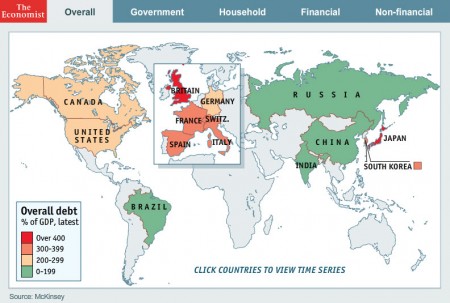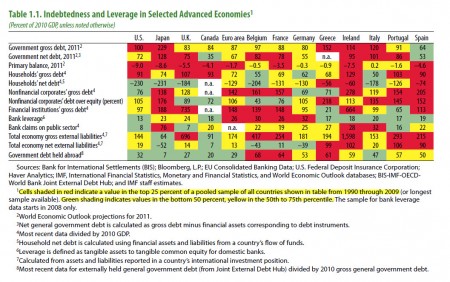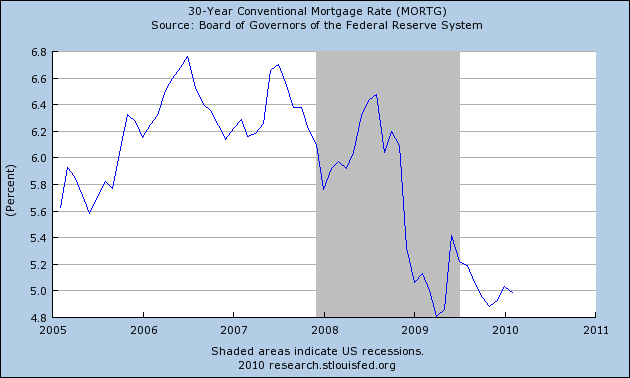Home » Posts tagged 'debt'
Tag Archives: debt
World Debt Map
Mapping the world’s debt problem, from Economist Magazine:
(click on the graph to go to the interactive chart)
Italy in trouble…
According to WSJ, less than two weeks after European leaders unveiled an agreement that was designed to bolster confidence in the region, the yield on Italy’s 10-year debt drew close to the 7% mark, a line in the sand of both practical and psychological importance to the market.
[singlepic id=9 w=400 h=300 float=]
Psychologically, 7% has become a beacon due to the fact that Greece, Portugal and Ireland each sought bailouts soon after their debt reached these levels. While analysts said it is too simplistic to say that Italy will be forced to ask for support if its 10-year debt yields 7%, they said the recent selloff is taking the country to the tipping point.
A sharp slide in bond prices pushed yields to their highest levels since the inception of the euro. The two-year yield rose a staggering 0.60 percentage points to 6.04% while the five-year yield climbed 0.37 percentage points to 6.56%.The 10-year yield was up 0.27 percentage points to 6.60%, having hit a new high of 6.62% earlier Monday.
[singlepic id=10 w=500 h=375 float=]
Update 1 (on Nov. 10, 2011)
Italian gov. bond yields continues to soar, now above 7% threshold. See the chart from WSJ below:
[singlepic id=13 w=400 h=300 float=]
It seemed that Europe is gradually approaching its own Lehman moment. What’s different, compared to previously trouble of other smaller PIIGS, is that the latest escalation fed fears that the euro-zone debt crisis is starting down its most perilous path: going from a storm raging among small countries at Europe’s fringe to one that strikes a major economic power.
Also, Italy’s debt load of €1.9 trillion ($2.6 trillion) is the second largest in Europe, behind Germany’s, and the fourth largest in the world. Next year, more than €300 billion of debt comes due, and Italy must continually tap markets to refinance it.
Debt Snapshot
A snapshot of debt (government, household and corporate) of world’s advanced economies. For a hint of what’s likely to be the end of the game, read my previous post, “The moral breakdown“.
(click to enlarge; source: IMF)
Marc Faber on ways to cure the debt disease
Interview of the outspoken Marc Faber:
Greek crisis is not over…
On Wednesday, the yield on Greece’s 10-year benchmark bond jumped to its highest level in a over a decade, Greek stocks fell, and the cost to insure Greek government bonds against default rose again. An International Monetary Fund team visited Greece, reflecting concern over a mammoth national debt—113% of annual output—that governments in Athens have spent years accumulating and sometimes masking.
Situation’s gotten worse today:
When Greece emerged from a European Union summit two weeks ago with the blueprint for a joint euro-zone and International Monetary Fund package tucked in its back pocket, many hoped the plan would stay exactly that: a plan. But soaring yields and fear of contagion to the banking sector have raised the chances Greece will have to call for concrete aid.
The presence of the aid package might have been expected to calm markets; but continued opacity over its workings and fears that political disagreement could prevent swift disbursement have left investors with more questions than answers. Greek 10-year bond yields hit 7.49% Thursday, a level not seen since 1998, sending the country back to pre-euro era borrowing costs. More worrisome, the real damage is at the short end of the curve and in the volatility of prices: Two-year Greek bond yields have risen more than two percentage points in just two days to 7.68%, a shocking 6.75 percentage points above German debt.
Adding to investor nerves, Greek bank deposits by domestic residents have declined sharply. As J.P. Morgan notes, though, it is difficult to know how to interpret this. It may perversely say more about the Greek government’s success in tightening fiscal policy, leading to worries about tax increases, than about lack of confidence in the banks, which have so far weathered the financial crisis well.
The result is that Greece may now have a case for proving that “market financing is insufficient”— the condition laid out by euro-zone leaders for providing support—as it seeks to raise €11 billion ($14.7 billion) to cover May’s refinancing needs. Finance Minister George Papaconstantinou says the country will keep on borrowing and seek to restore credibility. But plans to issue a dollar bond have gotten a cool reception by the market, and investors will be looking with trepidation at the performance of the new bonds sold by Greece this year: Last week’s seven-year issue has fallen six points already.
What might a rescue package look like? Greece might be able to borrow €15 to €20 billion from the IMF, with perhaps €20 to €25 billion coming from the euro zone, Barclays Capital estimates; this would certainly cover funding needs for the rest of the year. The IMF funding at least would be cheaper than market rate, at 1.25% for the first €3 billion and 3.25% for the rest; the euro zone might settle somewhere between 5% and 6% to reflect recent bond issue costs.
Tensions will remain high. Mr. Papaconstantinou is right to focus on continuing to implement Greece’s planned fiscal tightening. But the market now seems unwilling to give Greece the time it needs to repair its damaged credibility.
Also watch this video analysis from FT on whether the Greek debt crisis could be contagious.
James Grant on US Credit Risk
Time to shift gradually out of US treasury/bond market.




![[TRADE_p1]](https://sg.wsj.net/public/resources/images/P1-AU640_TRADE__NS_20100407182817.gif)
